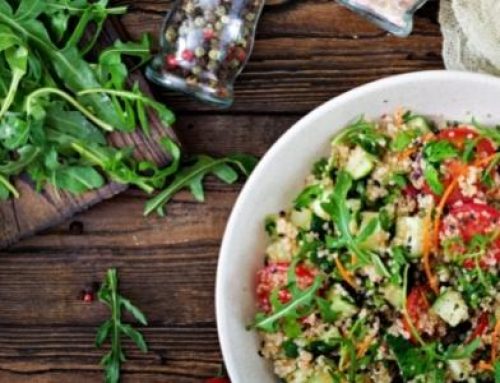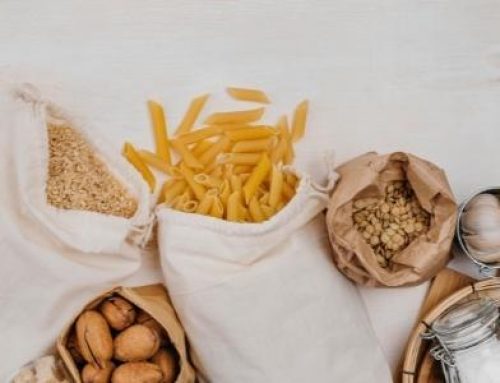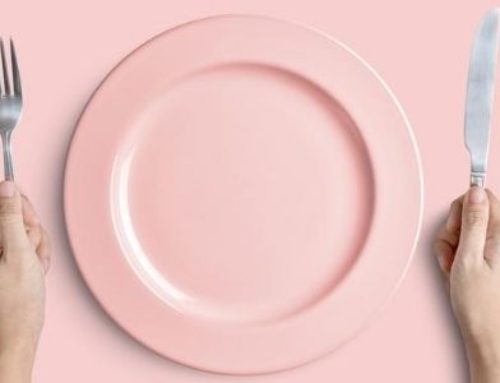 Did you know that your bones make up about 15% of your total body weight? Yeah, truth bomb!
Did you know that your bones make up about 15% of your total body weight? Yeah, truth bomb!
There are 206 bones in the adult body and they make up the framework that allow us to stand, sit, walk, talk, chew, and … just about everything else. If we didn’t have them, we would be a big blob of soft tissue that doesn’t function very well.
Until you break a bone, or need a replacement joint, we often take our bones for granted. It’s worth thinking about your bone health and how you can prevent osteoporosis, falls and fractures, all of which will impact your health and quality of life in our later years.
So, here are 8 habits that you can build NOW to keep your bones strong for life.
1. Count your calcium
Your bones are a complex mix of collagen fibres, living cells and mineral structures. Calcium is one of these very important minerals and without it you would have very weak bones. We are constantly building and repairing our bone structures. Ensuring you have adequate calcium from your diet is pretty important.
Now, I don’t mean tally up your milligrams of calcium. That’s tedious and yuck! The easiest way to know you’re on the right track is to get 3 serves of dairy in each day. Dairy is one of the richest sources of calcium and 3 serves of dairy is likely to be enough to help maintain your bone density and strength.
But what’s a serve? Good question! 1 serve of dairy equates to:
- 1 cup (250ml) of milk
- 200g of yoghurt
- 2 slices (40g) of low fat cheese
Habit building challenge:
Try adding some of these ideas into your day and tally up your daily dairy serves!
- Pack a yoghurt for your afternoon tea or evening snack
- Put a slice of cheese in your sandwich
- Make a smoothie for breakfast
- Don’t forget your coffee! A small flat white or latte will give you 1 serve of dairy
If you’re vegan, lactose intolerant, allergic to milk or you just really don’t like it, it’s important to think about a dairy free alternative source of calcium. Here are some easy alternatives that will provide you with a similar amount of calcium as 1 serve of dairy:
- 1 cup (250mL) calcium fortified soy milk
- 1 cup (250mL) calcium fortified almond milk
- 100g canned salmon
- 100g tofu set with calcium salt
- 200g of Asian greens
- 2 cups cooked soy beans
- 100g almonds
There are lots of foods that contain smaller amounts of calcium including broccoli, parsley, baked beans, fortified bread, fortified breakfast cereals, tahini; the list goes on. By eating a variety of different whole foods you are much more likely to meet your calcium needs for healthy bones.
2. Get some sunlight!
Vitamin D goes hand in hand with calcium. Without enough Vitamin D your body doesn’t absorb calcium from your food, or utilise it in your bones very well. Getting some sun exposure is the most effective way to boost your Vitamin D, which is also likely to boost your mood and improve your immune system! Win, win, win!
Habit building challenge:
Take your lunch outside and eat in the sun or take a walk in your lunch break 2-3 times each week. Every little bit helps!
3. Track your fruit and veg
While calcium and Vitamin D do get the nutritional limelight when talking about bones, the research indicates there’s much more to it. There is a growing body of evidence that bone health is not reliant on one or two nutrients, but on diet quality as a whole. A high consumption of fruit and vegetable (5 or more serves per day) is highly associated with lower incidence of osteoporosis and osteoporotic fractures.
I could go on and on about how fabulous vegetables are and all the ways that they support our health. In fact, we have done it in the past – Check these articles out:
How do you know if you’re getting enough? Count them!
Habit building challenge:
Tally up your serves of fruit and vegetables each day in a diary or on your phone and see if you can improve each week!
Try and hit 5 serves of vegetables and 2 serves of fruit.
1 serve of vegetable:
- 1 cup of salad
- ½ cup of cooked
1 serve of fruit:
- 1 medium piece (apple, pear, orange, banana etc.)
- 2 small pieces (plums, apricots, kiwi fruit etc.)
- 1 cup of chopped fruit (fruit salad, berries, grapes etc.)
Here are some great meal and snack ideas to boost your fruit and vegetable intake:
4. Lift heavy things
Your bones are not just a solid structure the way we see them as skeletons. They are living, growing tissue that is constantly changing, building and adjusting to your body’s needs. And one of the things that they adjust to is stress.
Your bones are stimulated by the push and pull of our muscles. Think about that the last time you helped a friend move house. When they asked you to lift up a heavy box, your arm muscles had to contract and pull on your forearm bones closer to your chest. This pull against the resistance of the heavy box put stress on your bones. That stress stimulates your bone tissue to build stronger fibres so that if you do this exercise again and again, you won’t break your forearm bones. The same is true for all your bones. If you can stress your leg muscles by doing squats and lunges and lifts, then you are stressing the bone in all different directions which stimulates the bone to reinforce its structure.
Habit building challenge:
Pick 2-3 days a week to lift some heavy things
- Ask for a plan from at PT at your gym to incorporate some resistance exercise into your workout
- Fill 2 leftover milk bottles with water and hold them while you do exercise at home
- Try a yoga routine that pushes your leg and arm strength
5. Plan Your Protein
If your bones respond to the stress of our muscles, then it’s also important to make sure that you build and maintain strong muscles. As our muscles are made of protein, getting enough protein from your diet helps to keep your muscles strong. Consuming adequate protein also stimulates your bone building cells (osteoblasts) directly. This means that by eating protein rich foods at each meal, you’re not only helping build your muscles but also helping build healthy bones.
Habit building challenge:
Plan a rich source of protein for breakfast, lunch and dinner. Try these recipes, all of which contain a rich source of protein:
- Toasted Pine Nut and Chicken Pasta – 35g per serve
- Chicken and Corn Pot Pie – 25g per serve
- Zesty Lamb with Grilled Vegetables – 38g per serve
- Fish with Tomato and Feta Salsa – 46g
You might also be interested in checking out this article about the importance of protein for your muscles as you age.
6. Walk (or run) it off
In the same way that your bones get stronger in response to the stress of lifting heavy things, your bones also respond to the stress of impact. Walking and running both involve shifting all your weight onto your legs with some force of propulsion. This impact stresses the bones in your legs and hip and stimulates those bones to strengthen themselves.
Habit building challenge:
- Set yourself a SMART goal of how much walking (or running) you would like to do in a week. Each week try and increase that time buy 5 minutes. You will be amazed at how quickly it adds up!
7. Enjoy a cuppa
The humble cup of tea is associated with quite a few health benefits and bone health is no exception. Tea consumption is associated with reduced bone loss in older women and drinking green tea may also help improve bone density.
Habit building challenge:
Swap your unwanted 3:00pm snacking habits for a hot cup of green tea!
8. Check your alcohol intake
Alcohol can interrupt the absorption of calcium and vitamin D and it also effects the liver, where vitamin D is activated. Heavy and chronic alcohol consumption is a strong risk factor for the development of osteoporosis.
Habit building challenge:
Pick 4-5 nights each week to be alcohol free. It will make the nights you do have a drink a bit more special.
There are a lot of challenges packed in here. Try picking just one to work on and as you get confident with that, add more.
If you’d like further help with your nutrition please click below:





